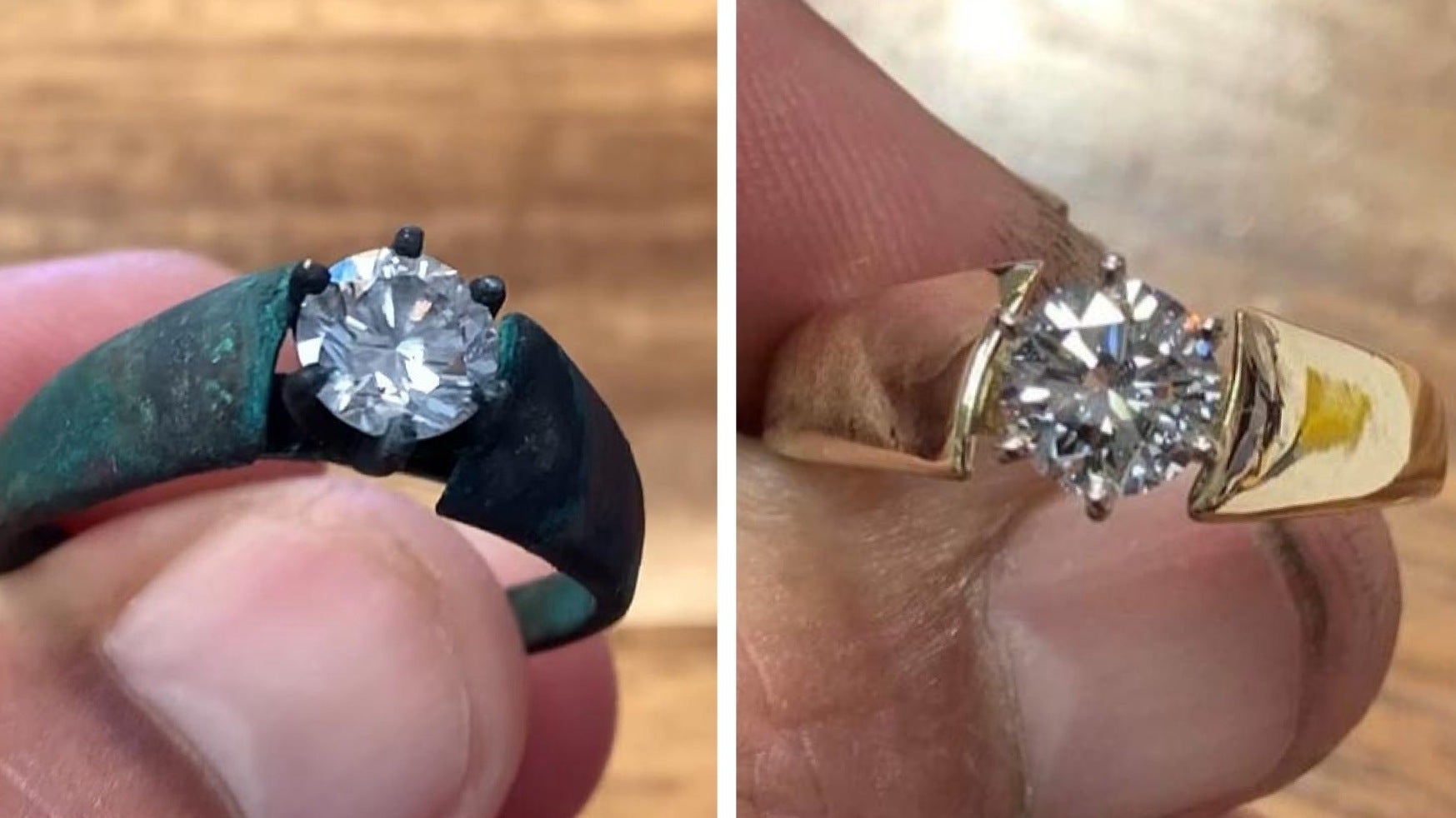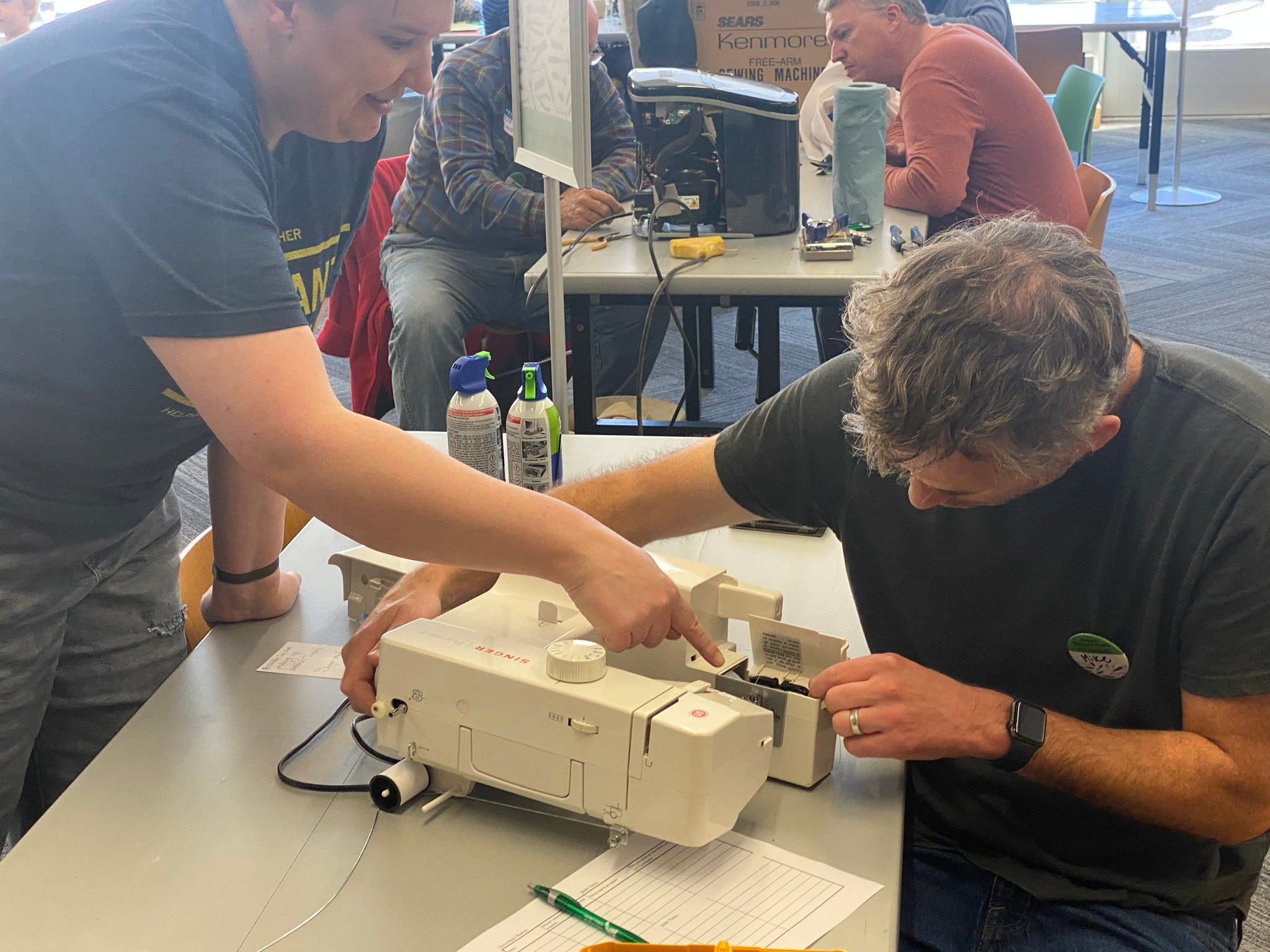It was like finding a needle in a cindered haystack.
Wearing a hazmat suit and goggles, Shelly Romo surveyed what was left of her Maui home in November — hoping to find her wedding ring, expecting to leave empty-handed.
After three hours in the rubble with volunteers, it finally appeared, the diamond unscathed but the band completely tarnished. Until then, char had signified loss. Not this time.
News with a little more humanity
WPR’s “Wisconsin Today” newsletter keeps you connected to the state you love without feeling overwhelmed. No paywall. No agenda. No corporate filter.
Romo and her husband went straight to No Ka ‘Oi Jewelers — a local business that has been restoring fire-damaged jewelry free of charge. That’s exactly what they did for Romo.
“This ring, it’s a symbol of my life that my family has built together,” she said. “Every time when I look at this ring, that’s what I think of.”
Maui has not been the same since early August when wildfires hit, claiming 100 lives and decimating hundreds of acres in Lahaina, Kula, Ka’anapali and Pulehu. It was the deadliest U.S. wildfire in over a century.
For many, rebuilding has been a long, tumultuous and grief-stricken process. But one source of strength has been the never-ceasing support from the local Maui community. No Ka ‘Oi has been a testament of that, Romo and other customers told NPR.
A longtime Maui resident springs into action after wildfires
No Ka ‘Oi owner Omi Chamdi said he was one of the lucky ones — the fires had avoided his home and storefront. That’s why, in its aftermath, Chamdi, a longtime Maui resident, immediately sprang into action and advertised free restorations.
“When the fires and devastations here on Maui occurred, pretty quickly I decided this is something I can do and I really want to do for the affected community,” he said.
No Ka ‘Oi has restored over 150 pieces of jewelry so far and at least 300 more are in the works. It’s an intricate and lengthy process, Chamdi said, that can involve polishing, lasering, soldering and rhodium plating. Depending on the damage, it can cost up to a few hundred dollars. Chamdi does not restore the jewelry himself. Instead, he has been paying for restoration services out of pocket.
“These are not just ordinary items, these are the most precious possessions that people go back to the ruins and dig through the rubble to find,” he said. “That’s why I feel this is something I want to do and must do, because this is within my expertise.”
Recovering lost items gives wildfire victims a semblance of hope and closure
Romo was not ready to say goodbye when the fires destroyed her home as well as the pack and ship store she had worked at. But finding her wedding ring gave Romo some peace about moving on.
“I needed that closure,” she said. “So that I can just be like, OK this is going to be it. This is not going to be our house anymore.”
For Michelle Quirk, her grandmothers’ and great-grandmothers’ rings were her connection to her family heritage.
Quirk, who also lived in Lahaina, was working on the Big Island on the day of the fires — which meant she was physically safe from the blaze but had no way of retrieving any of her belongings.
Her home was completely gone by the time she returned to Maui. But within days of the fires, Quirk visited the ruins twice with shovels, determined to find her family’s heirlooms. No Ka ‘Oi later restored all six of her rings.
“Just finding the rings honestly has helped me emotionally,” she said. “Before, I couldn’t even really talk about it or understand what happened. Then once those rings were found, it gave me hope.”
Quirk had long planned to pass down her family’s rings to her future children. She said she was grateful that dream can still come true.
“It was like, through all this, there are still blessings,” Quirk added.
For some victims, jewelry items are their only tokens from the past
Susan Fares evacuated with two days’ worth of clothes and toiletries thinking the fire would have been mild and contained. After the blaze, all that remained from Fares’ home was not even enough to fill a tiny bucket, she said.
No Ka ‘Oi helped Fares restore a bracelet she received as a gift from her older sister, who had passed away two years ago. But the hard truth about jewelry restoration is that not all pieces can be fixed.
Fares regrettably left behind the urn and stainless steel heart necklace which stored the ashes of her son, who had died of an overdose in 2013. She had worn that necklace every day until the 10th anniversary of his death.
Though the necklace held its shape, the damage on the stainless steel pendant was irredeemable, Fares said. But miraculously, the stopper inside the pendant remained intact, preventing her son’s ashes from falling out.
The urn, on the other hand, was completely gone, along with mementos from her mother and the only photographs of her children as babies.
“I’m sad that I lost things that are irreplaceable, but we’re all safe and we’re all OK,” she said. “I’m just grateful for what I do have.”
As Fares and her family prepare to move to Florida, she keeps the recovered bracelet and necklace with her at all times.
“Since I’ve lost both of them, I’m glad I have a little something from them,” she said.
9(MDAyMjQ1NTA4MDEyMjU5MTk3OTdlZmMzMQ004))
© Copyright 2026 by NPR. To see more, visit https://www.npr.org.9(MDAyMjQ1NTA4MDEyMjU5MTk3OTdlZmMzMQ004))



